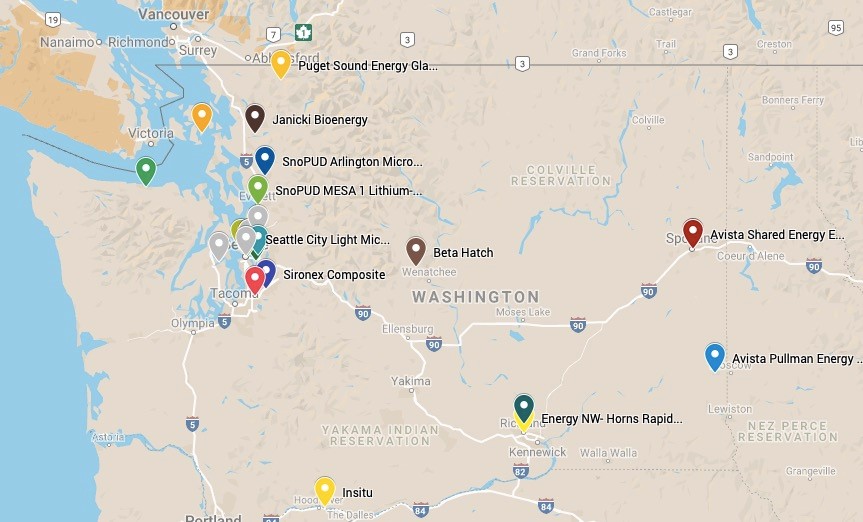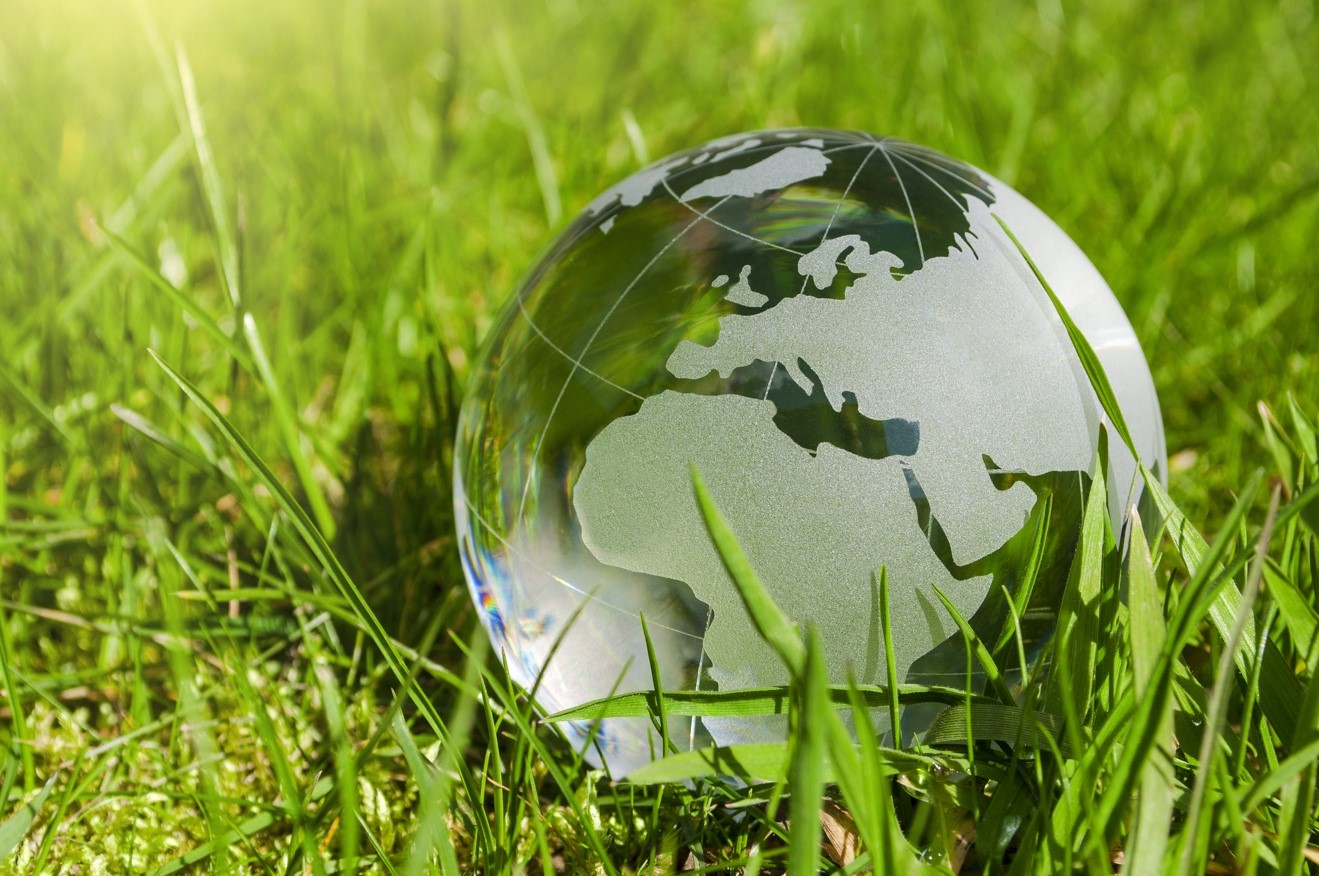This is an early draft from guest contributor Lindsay McCormick. We’re still looking for feedback before we publish a final version. Download the white paper as PDF here.
Lindsay was born and raised in Omaha, Nebraska. She attended Western Washington University and graduated in only 3 years with a degree in Biology with an Ecology, Evolutionary, and Organismal emphasis. She is passionate about biology, the environment, and politics and wants to make the world a better place by working to fight climate change. For further inquiries or employment opportunities, she can be reached at lindsaymccormick44@gmail.com or by phone at 402-707-3902.
Executive Summary
Overview
First established in 2013, the Clean Energy Fund (CEF) funds the development, demonstration and deployment of clean energy technology in Washington State. Since 2013, Gov. Inslee has championed the fund and the legislature has continued to invest capital budget into these grant programs.
The money in the CEF can only be used for projects that provide a benefit to the public through development, demonstration, and deployment of clean energy technologies that save energy and reduce energy costs, reduce harmful air emissions, or increase energy independence for the state.
The Clean Energy Fund provides matching funds for eligible projects so that the Fund is paying for, at most, half of the total cost and the project and the recipient provides the other half or more of the funding.
Written into the legislation is language that requires fairness in evaluating proposals, awarding contracts, and monitoring projects so that due diligence is performed and there are no conflicts of interest. The legislation also included detailed language on how much money is allocated into each of the programs within the Clean Energy Fund and the necessary criteria that recipients must meet in order to be eligible for funding.
Programs within the Fund
There are currently five active programs within the Clean Energy Fund that fund projects all over the state (see map below). The five programs are Grid Modernization Grants to Utilities, Research, Development, and Demonstration (RD&D), Clean Energy Revolving Fund Program, Electrification of Transportation Program, and Solar Deployment Program.
By the Numbers
- Since its formation, the CEF has provided over $116 million to grow the state’s clean energy economy.
- To date, the Energy Grid Modernization program has awarded about $39 million in grants to utility companies. The first iteration of funding (CEF1) was estimated to generate 391 jobs and in the second iteration (CEF2), 430 jobs.
- The RD&D program in CEF3 had 52 applicants competing for $8.2 million in funding and ultimately chose 10 conditional awardees.
- Craft3, Puget Sound Cooperative Credit Union, and the Washington State Housing Finance Commission are perennial recipients of Grants to Nonprofit Lenders and have leverage ratios of 4:1, 20:1, and 11:1, respectively.
Map of CEF Project Sites

Energy Grid Modernization
Overview
State investments have encouraged public-private partnerships on a diverse range of projects, leading the way in electrical grid modernization. From different battery chemistry to energy storage to microgrids and solar, Clean Energy Fund project data and business case analyses are transforming how utilities and communities view energy systems and resiliency.
In CEF1, $14.3 million of the $15 million in the 2013-2014 budget was awarded to 3 electric utilities. The projects focused on different battery and storage systems and culminated in the deployment of both Lithium Ion and Vanadium Redox Flow battery systems.
In CEF2 $12.5 million of the $13 million in the 2015-2016 budget was awarded to 5 electric utilities. These projects focused on microgrids combining solar with storage, load controls and other elements to provide resiliency benefits and expand upon the battery energy storage demonstrated in CEF1.
In CEF3, the most recent iteration of funding, $10.67 million of the $11 million in the 2017-2019 budget will be awarded to 4 electric utilities. The individual grants will be between $1 million and $3 million and will represent no more than 50% of the total project cost.
Success Stories
The Puget Sound Energy Glacier Battery Storage project in Glacier, WA involved the installation of a 2 megawatt (MW)/ 4.4 megawatt-hour (MWh) lithium-ion battery system. The battery system is tied to PSE’s electric distribution power grid and serves as a short-term backup power source during outages and aims to reduce system load during periods of high demand and balance energy supply and demand. The project received $3.8 million in funding in addition to $7.4 million provided by PSE. The battery system is fully functional and 2 phases of testing have been performed by the Pacific Northwest National Laboratory (PNNL) to determine the benefits of the battery and to identify future applications.
Energy Northwest’s Horn Rapids Project in Richland, WA received $3 million of the $6.5 million project from the CEF. The funding will be used to construct a first-of-its-kind facility that combines solar generation, battery storage, and technician training. Construction is expected to begin in fall 2019 and end in early 2020 and the result will be a 1MW/4MWh battery storage system with the capacity to power 150 homes for 4 hours. The training program will cover plant construction, operations, maintenance and hazard prevention and is expected to bring about $3 million into the Tri-Cities annually.
Research, Development, & Demonstration Program (RD&D)
Overview
The purpose of the RD&D program is to support Washington’s research institutions, organizations, and clean energy technology companies that are involved in any of the following; advancing energy storage and solar technologies, advancing bioenergy and biofuels, developing new earth abundant materials or lightweight materials, engineering advanced energy storage materials, implementing innovative approaches for recycling of battering components, developing new renewable energy and energy efficient technologies.
The RD&D program was designed by consulting and coordinating with clean energy institutions of higher learning, national laboratories, and other clean energy organizations and it aims to further the research and development of clean energy technologies at those organizations and institutions.
All of the grand awards are competitive and conditional upon the execution of final project agreements and performance-based contracts with Commerce. In CEF3, 52 applicants, totaling over $51 million in projects, competed for $8.2 million in available funding and out of those 52, 10 applicants were awarded money.
Success Stories
The University of Washington Mechanical Engineering Department MEBARC program received $1,125,360 in funding from the CEF. They aim to make composites manufacturing economically viable by ensuring high part quality, lowering energy costs, and minimizing waste and scrap.
Corumat received $2,344,500 from CEF3 to develop bio-derived plastics relevant to the food industry. They intend to replace solid plastic with as little as 1/3 the material, which will dramatically reduce the carbon dioxide emissions associated with petroleum pellets by replacing them with bioplastic pellets.
Grants to Nonprofit Lenders
Overview
These matching grants finance loan-loss reserves or interest-rate buy downs for proven building energy efficiency and renewable energy technologies that currently lack access to capital, generating opportunities within the residential and commercial sectors.
Revolving Loan Fund grants have shown that a modest public investment can promote private investment and the funds have allowed lenders to leverage other private financing from utilities, contractor incentives, and other sources to allow homeowners and businesses to complete projects that install efficient windows, insulation, ventilation, and high-efficiency water heaters, seal ducts, and replace boilers.
The loans provided by these lenders have supported the use of proven energy efficiency and renewable energy technologies by recipients that otherwise lack access to capital and the grants have driven economic activity and created jobs for Washingtonians.
Success Stories
Craft3 is a nonprofit CDFI lender that serves rural and urban low-income communities in Washington and Oregon. They administer both residential and commercial clean energy loan programs and in CEF1, they received $8.7 million for the commercial sector and $2.9 million for the residential sector and have received funding in each of the subsequent iterations of funding. Craft3’s commercial lending leverage ratio is 4:1 and their residential ratio is 1:1.
Puget Sound Cooperative Credit Union received $2.9 million for the residential sector in the Energy Revolving Loan Fund from CEF1 and has continued to receive grant money. Recently, they received grant money for loan loss reserves to support Energy-smart loans, which includes renewables and electric vehicles. Puget Sound Cooperative Credit Union leverages funds at a ratio of 20:1.
Washington State Housing Finance Commission has used $376,654 from the CEF in the past for energy retrofit loans to projects in multifamily housing and buildings owned by nonprofit organizations. The Housing Finance Commission anticipates that they will leverage over $108 million in non-state funds, an 11:1 match for state funding.
Conclusion
The success stories listed are just a few of the many projects that the CEF has helped to make possible. Over the past 6 years, the Clean Energy Fund has provided the funding for world-changing research and projects that otherwise might never have proceeded. Washington is leading the way and setting an example for other states by prioritizing and investing in clean energy.
In the first two cycles of funding alone, CEF1 and CEF2 invested $76.4 million and got an additional $166 million in matching funds, a $2.47 return on every $1 invested. The funding provided by the CEF not only supports the advancement of clean energy technologies, it also creates jobs, promotes innovation, and benefits the state’s economy.
From groundbreaking new research to game-changing grid projects, Clean Energy Fund investments are paving the way for a cleaner and greener future that’s sustainable for generations to come.
Acknowledgements
A special thanks to Tom Ranken at the CleanTech Alliance™ and Brian Young at the Washington Department of Commerce for the opportunity to create this paper.
